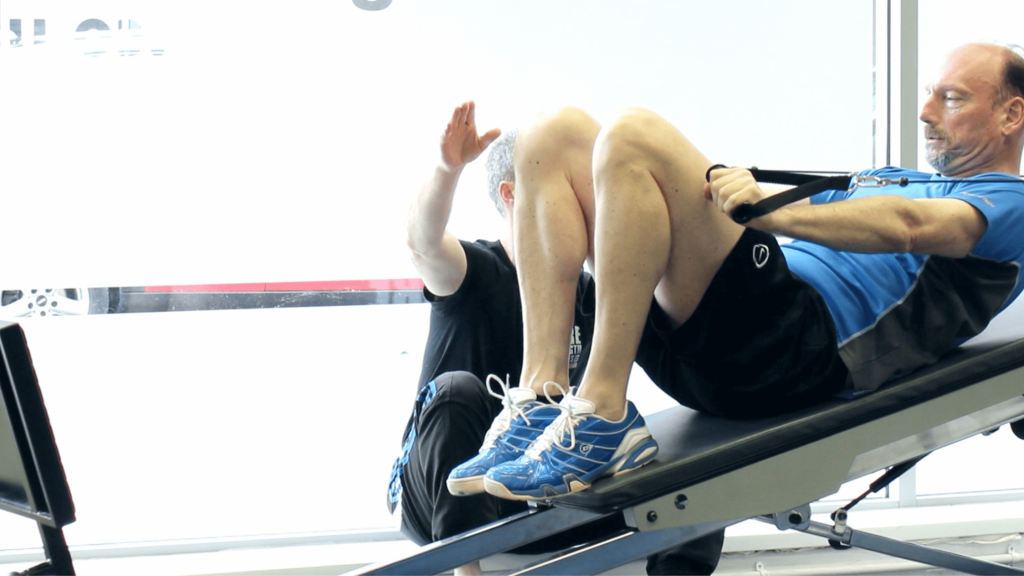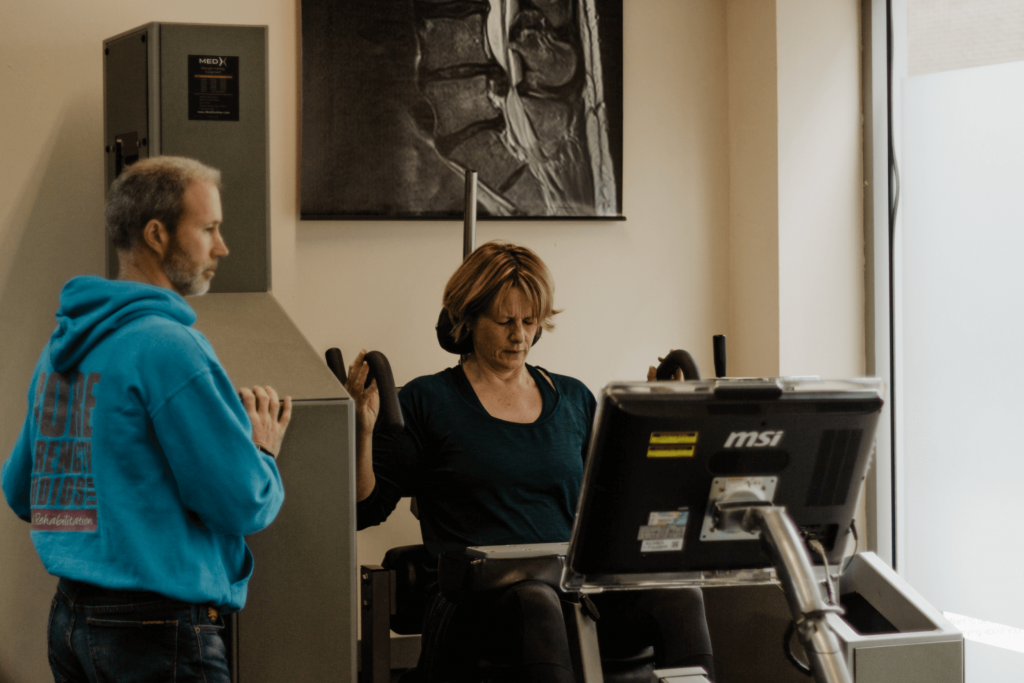Studies show that following a back injury, 70% of people will significantly improve after 2 weeks, and 90% to 95% of people will recover within 2-3 months.
During this ‘acute’ phase, the focus should be on staying as comfortable as possible whilst the body’s natural healing process takes place. Passive treatments such as massage, manipulation (where appropriate), painkillers and heat can all help at this stage. It’s also important to be aware of posture, how to protect your back from further injury, and finding comfortable positions to ease the pain.
Staying active and avoiding excessive rest during the acute phase is also important to avoid rapid deconditioning of the back muscles.
The pain experienced by the 5%-10% who do not recover within this time is classified as chronic. Evidence shows that deconditioning because of pain and reduced activity in people who have chronic back pain can result in weakened muscles of the low back and spine.
It is possible for the body to be strong everywhere except the back. The back can only be strengthened when the lumbar spine is moving against resistance. Typically, if you have back pain, you will (unknowingly) change your body mechanics to protect your back, substituting pelvic motion for lumbar motion.
Pelvic Motion vs Lumbar Motion
When we extend our trunk (go from a bending forwards position to leaning back), the muscles of the hamstrings and buttocks work to rotate the pelvis through the initial 110 degrees – as the spine remains fixed – with little activation from the lumbar muscles (fig.1). During the remaining 72 degrees of movement, the muscles of the low back take over to extend the spine.
When the lumbar spine is exercised in isolation, however (fig.2), with the pelvis fixed, it is the muscles of the low back (the lumbar extensors) which are working to extend the spine.

(Fig.1.) In a normal motion, as we extend, the leg muscles move the pelvis through the initial range of movement, with the lumbar muscles only taking over to extend the spine towards the end of the range.

(Fig.2.) In an isolated lumbar motion, the lumbar extensor muscles extend the spine, and the pelvis is fixed
A study at the University of Florida tested 3 groups of volunteers over 12 weeks; one group (the control group) did no exercise, the second performed standard back exercises, and the other group exercised using equipment which isolates the lumbar muscles by stabilising the pelvis.
At the end of the 12 weeks, there was no significant difference in the strength of the low-back muscles between the control group and the group who performed standard back exercises. The group who exercised with the pelvis stabilised, however, averaged a 120% increase in the strength of the low back muscles at full extension.
To exercise and strengthen the lumbar muscles, we need, therefore, to stabilise the pelvis and isolate the low back muscles.
The MedX Lumbar Extension machine we use for our programmes was developed to restore strength, flexibility and endurance of the low back, to reduce pain within 12 weeks and enable people to return to full function without the re-occurrence of pain.
The equipment has been designed to isolate the muscles of the low back through stabilising the pelvis and providing controlled training of the lumbar muscles through a set pain-free range of motion (fig.3)

(fig.3)
Through performing progressive resistance exercise to strengthen the low back muscles, you can achieve a significant reduction in pain, return to full function and get back to doing the things you love in 12-18 weeks. Once full function is restored, a simple at-home programme can be followed to maintain strength in the low back and protect against further attacks.
Sources:
- A rational approach to the treatment of low back pain: Nelson B
- A new clinical model for the treatment of low back pain: Waddell G
- Helping your patients avoid low back pain: Frymoyer JW
- Recent advances in the treatment of low back pain: Nachemson A
- The natural course of low back pain: Nachemson A